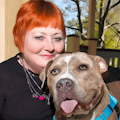Three hundred seals, 2,800 sea otters, 250,000 sea birds and a host of other wildlife were killed by that spill, acknowledged Corrie Pitzer, an industrial psychologist from SAFEmap International in Vancouver. However, he added, 250,000 birds are killed by flying into windows every year.
"The cleanup cost was $2.1 billion, with a 50 percent reach," Pitzer told an audience at a June 25 session of the American Society of Safety Engineers' (ASSE) 2007 Professional Development Conference in Orlando, Fla. "That means that only 50 percent of Prince William Sound was cleaned."
Six years after the cleanup, a study was conducted to determine ecological recovery in the sound. What researchers found was that the areas that were not cleaned were in better shape – with more wildlife and cleaner water and soil – than the areas that had been cleaned. The chemicals and high-pressure washing used to "clean" the area had destroyed the ecosystem in some parts of Prince William Sound.
"The environmental disaster was the cleanup," said Pitzer.
The Power of Perceptions
Pitzer said that Exxon knew that the cleanup would be prohibitively expensive and, in large part, pointless. But the company was forced – by public perception that cleaning the area was the best practice and, in part, by public outcry against the company – into the cleanup effort.
"That is the power of values, perceptions and beliefs in action," said Pitzer.
In his presentation, Pitzer examined how values, beliefs and perceptions impact safety, and how our society's perception of risk is changing. Traditional risk models:
- Have rational values.
- Promote achieving the best.
- Believe that threats are unknown.
- Believe that risks are ordinary.
The new risk model, which Pitzer calls a "risk society," involves irrational values, argues for preventing the worst, believes that threats are known, focuses on guilt for not preventing risk and sensationalizes risk.
As an example, he pointed to the banning of DDT as a pesticide. DDT is a very effective way to kill mosquitoes, but it also contributes to health effects in birds and animals. The book "Silent Spring" brought the attention of the world to the health impact of DDT on birds, and played a role in the eventual banning of the pesticide.
What people seemed to forget, said Pitzer, is that malaria is spread by mosquitoes. "The story of DDT in Africa is that they banned one of the most effective disease prevention tools, and now malaria kills millions of people," said Pitzer.
A risk society "looks at risk emotionally, rather than logically and scientifically," he added.
A Risk Society "Limits Safety Growth"
Pitzer commented that his wife wanted him to live a healthier lifestyle, jog more and eat better foods. "If I jog 1 hour a day, every day, by the end of my life, that's a year and a half. So I asked her, 'Why would I run 1 1/2 of my good years to add 1 1/2 years to the crap end of my life?'" Pitzer said. "The benefits of healthy eating might add 2 years to the end of your life; 2 more years on a ventilator and diaper."
According to Pitzer, too much time and resources are being spent planning for risks that have a low probability of occurring but seem overwhelming and immediate. Meanwhile, the day-to-day risks that take thousands or millions of lives are ignored.
For example, large corporations spend hundreds of thousands and even millions of dollars on pandemic flu planning, while providing a relatively small amount of resources for safety, where the resources would allow for a positive outcome. In reality, our risk is far greater of dying in a car crash than it is of dying in a flu pandemic, yet companies that offer no training for employees in driving safety are spending resources to prepare business continuation plans in the event of a pandemic flu outbreak.
According to Pitzer, our society is evolving into a risk society, one that tries to prevent the worst outcomes, reacts to threats that are sensationalized and "limits safety growth."
About the Author

Sandy Smith
Sandy Smith is the former content director of EHS Today, and is currently the EHSQ content & community lead at Intelex Technologies Inc. She has written about occupational safety and health and environmental issues since 1990.